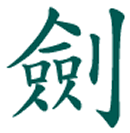"Dear Mr. Garofalo,
Thank you for your informative blog on Taiqi.
If you have any advice to offer, I am writing to seek suggestions on selecting a Qi Gong style -- a disciple suitable for an out-of-shape novice in her 30s.
I live in the San Francisco Bay area and understand basic Chinese, so I've got of options. I am writing to you because you seem to have familiarity with a wide variety of styles, and are near enough to perhaps know of options here without having a personal allegiance.
The immediate motivators are to reduce weight, increase energy flow, and improve concentration. I enjoy breathing exercises, meditation, yoga, swimming, and dancing.
One problem is a mental-block against imitating things I don't understand. I'd prefer a style which is good at explaining itself, well documented, or for which an exceptional teacher can be recommended.
I have taken Tai Qi Quan before,and quickly fell behind the sequence. Rather than relaxing, I found myself feeling inadequate at the task of imitating the sequences. Would like to put myself in a different situation this time.
Thank you in advance for any advice you can offer.
Sincerely,
Andria J."
Dear Andria,
1. Purchase and use good instructional DVDs, videotapes, and books. These allow you to repeat, review, repeat, study carefully, and get a sound foundation. You will never fall behind anyone - classmates or teacher. After you have a solid and comfortable foundation, find a teacher and group with which to practice and learn more together. Good books help you learn the history, theory, concepts, and traditions of the internal martial art.
2.
Wild Goose Qigong has more movement and flow than other styles of Qigong. It might appeal more to your background and interests in movement arts. There are many good Wild Goose Qigong teachers in the Bay area, including Dr. Bingkun Hu; and, there are many good books and instructional media on the topic.
3.
Sun Style Tai Chi Chuan has a nice flow and faster pace, and is far less martial than Chen or Yang styles. There are many good books and instructional media on the topic.
4. All Qigong and Taijiquan styles require concentration, focus, Qi management, relaxation, and some understanding of Taoist principles.
5. Think "Long Run" learning, improvement, skill acquisition, and development. Take your time, enjoy yourself, and do not be frustrated by somebody else's timetable for learning.
6. As for loosing weight: increase
walking and eat less.
7. Knowing how to speak/read/write in Chinese is a wonderful skill you have, and will open doors to you in your study of the internal martial arts. However, millions of people learn, practice and benefit from these arts who only speak English or other languages, and can't even say "thank you" in Chinese.
Best wishes,
Mike Garofalo







